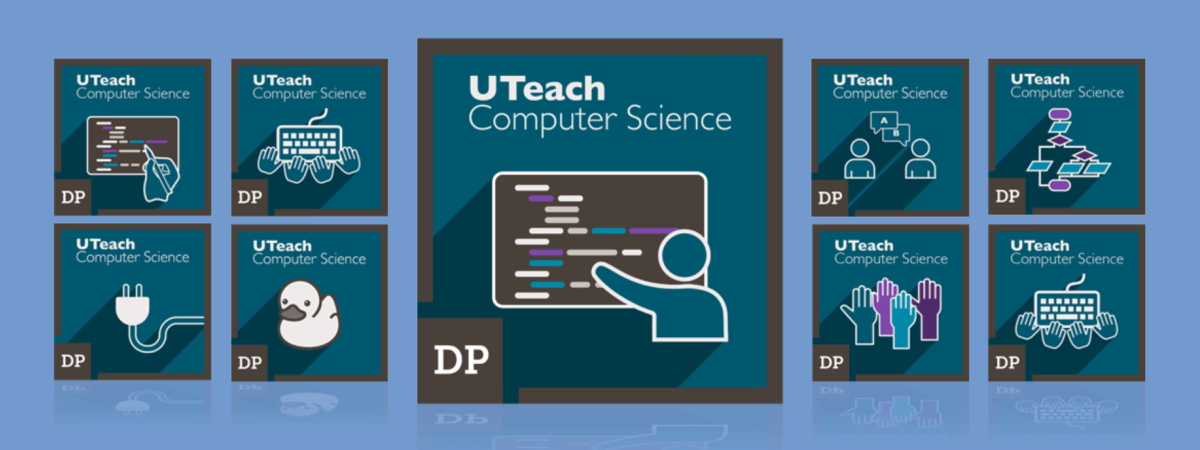
I have taught math at a public high school in Connecticut for the past six years, and began teaching UTeach Computer Science Principles (CSP) the first year it was offered. In the three years that I’ve taught the course, it’s grown from one small class of 12 students to multiple classes totaling more than 50 students. I’ve become comfortable teaching Advanced Placement (AP) CSP after several years, but I know there is always room for growth. Micro-credentials seemed like a great opportunity to incorporate current research-supported skills into my daily classroom practices and reflect on how I’ve been teaching AP CSP.
The first time you teach a course, you naturally think a lot about the “why.” But after you’ve taught the course for a while, it’s easy to become complacent and continue doing what you’ve always done. The micro-credentials gave me the opportunity to pause and reflect once again on the “why.” I’ve been doing the same thing for three years now—why am I doing this activity versus another? Why have I presented material in this manner, instead of another? If I’ve decided to give the students independent work, as opposed to an all-class activity, what are the reasons and benefits of that? Is there another way?
The live coding micro-credential presented me with an opportunity to consider the methods I’ve used in some of my coding instructions; in particular, it enabled me to show students with varying experience levels what to do in Python in an engaging way. When you’re live coding, you’re writing a computer program together with a class in real time in order to demonstrate the programming process—including the inevitable mistakes that happen along the way. One of the most important aspects of programming is the thinking that has to happen when something goes wrong. After you’ve read the same error message 15 times, you forget that while you, the teacher, might know what you’re looking for, the kids are looking at that error for the first time. When we transitioned to Python in AP CSP, my students who hadn’t done any type of text-based programming before struggled with the syntax. Live coding was really helpful for those kids especially. It showed them that everyone has trouble with the syntax (including the “expert!”), and that experience helped level the playing field. I’m not sure how clearly that would have come across if I hadn’t done the necessary reflection and research through the live coding micro-credential.
Incorporating this strategy created an environment where students felt comfortable struggling when they were programming independently. They had already seen how an “expert” would figure out the problem and participated in that problem-solving process. They had developed a tool that they could depend on when they were trying to figure it out alone.
Whether I live code in front of students or code on my own, there will be unplanned mistakes because that is how life works. Live coding with my class makes it a more engaging experience because the point is not for them to just watch me program perfectly and try to mimic it. The purpose of live coding, from my perspective, is to see what kind of problems we can run into and get ourselves out of, together as a class. The result is an engaged, collaborative classroom.
The act of planning, reflecting, and implementing this skill in my classroom has enhanced both my students’ experiences as learners and my experience as a teacher. There are other micro-credentials that I plan to explore, including Rubber Duck Debugging and Unplugged Activities. I’ve used some of these techniques before in my teaching, but am reinvigorated and reinvested in the reflection process. I would encourage other educators to take a few moments to stop, reflect, and strengthen their teaching practices through these micro-credentials.
Explore the Digital Promise Micro-credential Platform and start earning today.

We want to hear from you!
Please take this 5-minute survey and help us serve you better.
